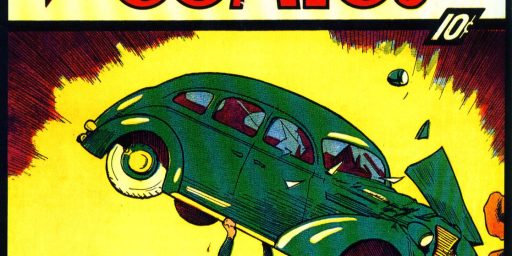Comic Books Top Stocks as Investment
Rare comic books have been among the best-performing investment vehicles.
AEI’s Kevin Hassett finds that rare comic books have been among the best-performing investment vehicles.
A savvy collector who purchased a first edition of a Fantastic Four comic book for 10 cents and kept it in pristine condition over the past 45 years could sell it today for $36,000. That comes to a compounded average annual return of 32 percent.
The Fantastic Four are not unique. Consider Justice League of America and The Avengers, two flagship superhero-group comics published, respectively, by DC Comics and Marvel Comics. According to data I gathered from The Overstreet Comic Book Price Guide, these comics—kept in mint condition—produced annual returns of 21 percent since their inception. Issues of The Amazing Spider-Man comics generated an average rate of return of 26 percent a year. An original 1939 edition of Superman #1 is currently valued at $335,000. In all, a random sample of comic books I constructed for this article returned a whopping 23 percent.
These data raise an important question: Why don’t sophisticated money managers and operating companies invest in comic books? It’s not unusual for pension funds and other institutional investors to buy fine art and other more conventional collectibles. The British Rail Pension Fund, for example, invested nearly $100 million, or 2.5 percent of its assets, in 2,400 works of art in the 1970s.
The surprise is that portfolios of collectibles, including art, don’t fare well. A review of studies on the performance of collectibles, published in the prestigious Journal of Economic Perspectives, reported that, after inflation, average annual returns on investments in furniture, coins, art, stamps, and books were all in the low single digits, with some categories even posting negative returns. All of these categories trailed the performance of the stock market. The only collectible with returns that rival those of comic books has been wine.
Sadly, Hassett believes the golden age of comic book investments is over, owing to simple supply and demand.
The first Superman comic came out in 1939, and the most popular Marvel comics appeared in the early 1960s. Assuming these comics were mostly consumed by 10-year-old boys, nostalgic collectors are getting up there in age.
What about supply? At best, it will probably maintain its current levels. Issues that sell for tens of thousands of dollars will be closely guarded, and the stratospheric prices received for old comic books will induce today’s kids (or their parents) to be more careful with their own purchases. Collecting may be intellectually and aesthetically engaging—and fun—but collectibles, alas, are unlikely to perform as well as the investments you purchase through your financial adviser.
Likely true. Indeed, much of the comic business has been targeted toward the collector, rather than the 10-year-old casual reader, for quite some time. The flood of collectible mini-series, special #1 editions, and the like have ensured that thousands of copies of most post-1990 comics will exist well into the future.
There’s another problem with comics as an investment. Unlike stocks or even stamps and coins, most comic collectors form an emotional attachment to their “investments.” Aside from duplicate issues kept for sale or trade, the sentimental value of a long run of one’s favorite series might outweigh the monetary value.






What? No graphic on Beanie Babies?”
I have to check the street market value of my two pet rocks before I invest in comic books.
If only I’d had such evidence to show my mother back when I was a kid… I’d be rich!
How much is the the comic book version of our U.S.Constitution that the LIEbrals use worth today?